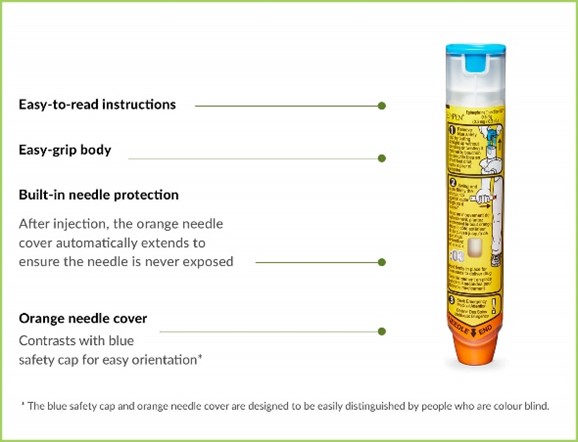Allergic Reactions & Using an EpiPen
Posted in Drug & Medical Devices, Health & Wellness on July 22, 2022

Allergies are the sixth most common chronic disease people deal with. More than 50 million people in the U.S. have allergies, and approximately 90,000 are hospitalized each year due to serious reactions. We have created a guide to understanding what to do when someone has a severe allergic reaction.
What is Anaphylaxis?
Anaphylaxis is a severe, life-threatening allergic reaction. The most common triggers include food, medications, insect bites, and latex. As the body recognizes an allergen, the immune system begins to release chemicals that signal allergy symptoms, such as:
- Breathing Difficulties
- Wheezing
- Dizziness or Fainting
- Nausea/Vomiting
- Hives or Swelling
- Changes in Blood Pressure
- Abdominal Pain
- Cardiac Arrest
What is Epinephrine?
When someone experiences anaphylaxis, the first step would be determining if they carry an EpiPen. EpiPens include the medication epinephrine, also known as adrenaline. When injected, this medicine immediately relaxes the airway muscles, reversing the allergic reaction.
When administering an EpiPen, it is crucial to follow the instructions on the packaging. After injecting the medication, immediately call an ambulance to get further assistance.

Source: EpiPen Website
Mistakes to Avoid When Using an EpiPen:
While EpiPens are meant to be user-friendly, take your time and avoid these potential mistakes:
- Not using enough force while administering the injection.
- If the EpiPen is not pushed with enough force into the outer thigh, the needle may not enter the skin far enough to inject the medicine.
- Not holding the injector in place long enough.
- Press, click, and hold for 10 seconds. By letting go too early, the epinephrine won’t have enough time to come out of the pen, resulting in continued symptoms.
- Using the wrong end of the injector.
- Hold the pen in the middle. If facing the wrong way and your thumb was on the top of the EpiPen, it could result in an accidental injection. If epinephrine gets injected into your hand, call 911 immediately.
- The safety cap wasn’t taken off.
- Without taking the orange safety cap off, the injection will not be administered.
- Moving around too much.
- While there is panic during these scenarios, maintain a steady leg to avoid inserting the EpiPen in the wrong area.
- Injecting on the seam of pants.
- EpiPens may be injected through clothing, but the seam of pants could be more challenging to penetrate.
This website is not intended to provide medical advice. Patients should consult with a trained professional about the proper procedure to follow if they experience an allergic reaction.